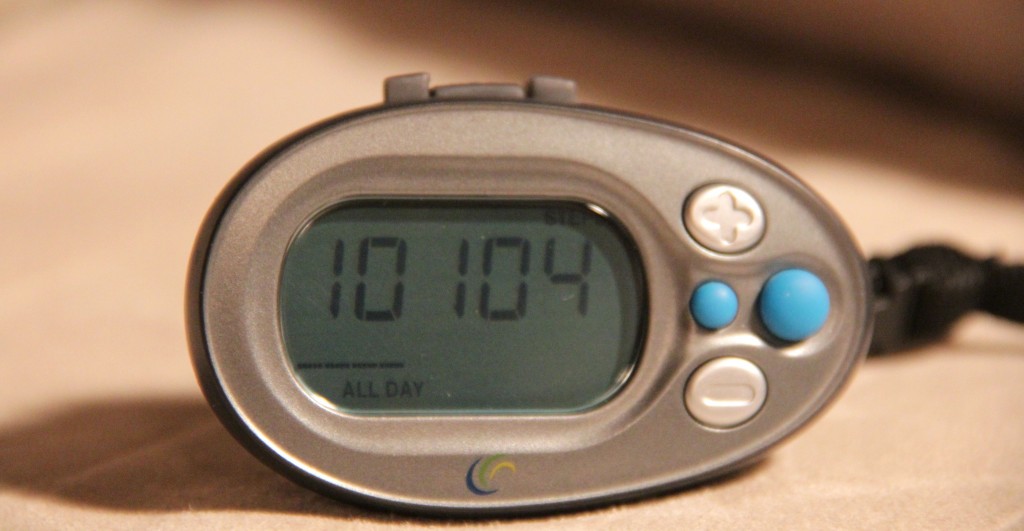
The Reality of Pedometers
Can Counting Steps Really Help You Meet Your Exercise Goals?
Photo Credit: Christine Urias, via Flickr Creative Commons
Pedometers are popular and effective for promoting physical activity and modest weight loss. They are often encouraged by health coaches, personal trainers and health insurance companies. One problem, however, is that they don’t provide an exact measure of exercise volume or overall effort. They are limited in that the “quality” (e.g., speed, grade, duration) of steps often cannot be determined.
Tracking steps is good, but the pace at which those steps are done is very important.
A goal of 10,000 steps per day is often cited, but in fact fewer steps may meet contemporary exercise recommendations. For example, recent data from America on the Move showed that those individuals who reported “exercising strenuously” three days per week (duration of exercise not ascertained) achieved a level that meets current recommendations. This means they accumulated a mean of 5,486 ± 231 steps per day. People reporting four days per week of “strenuous exercise” accumulated 6,200 ± 220 steps per day, and 7,891 ± 540 steps per day were reported by those “exercising strenuously” six to seven days a week.
In a randomized trial evaluating different doses of physical activity on fitness levels, sedentary women who engaged in a new program of physical activity that met current exercise recommendations averaged about 7,000 steps per day.
Increased Steps
Two meta-analyses of pedometer use showed that participants in these randomized clinical trials increased their daily steps on average by about 2,000 steps per day, equal to walking approximately one mile per day, and few of the most sedentary subjects achieved the goal of 10,000 steps per day.
In participants with elevated blood pressure, an increase of 2,000 steps per day was associated with a modest decrease in systolic blood pressure (∼4 mm Hg), independent of changes in body mass index. These results suggested that fewer than 10,000 steps per day might provide health benefits.
The study demonstrated that tracking steps is good, but the pace at which those steps are done is very important. So a more accurate goal to achieve moderate intensity exercise is 100 steps per minute for a duration of 30 minutes. We shouldn’t just rely on the steps alone as confirmation we are meeting the exercise guidelines.
What’s your exercise goal?








